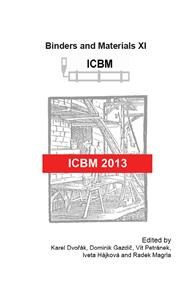[1]
Afridi, M., U., K., Ohama, Y., Demura, K., Iqbal, M., Z. A Note on the Comparison of Crack Resistance of Ca(OH)2 Crystal of Unmodified and Polymer-modified mortars in Carbonated Atmosphere, Cement and Concrete Research, Vol. 31, 2001, p.1643–1645.
DOI: 10.1016/s0008-8846(01)00600-7
Google Scholar
[2]
Mansur, A., A., P., Nascimento O., L., Mansur, H., S. Physico-chemical Characterization of EVA-modified Mortar and Porcelain Tiles Interfaces, Cement and Concrete Research, Vol. 39, 2009, p.1199–1208.
DOI: 10.1016/j.cemconres.2009.07.020
Google Scholar
[3]
Silva, D.A., Roman, H.R., Gleize, P.J.P. Evidences of chemical interaction between EVA and hydrating Portland cement, Cement and Concrete Research, Vol. 32, 2002, 1383–1390 p.
DOI: 10.1016/s0008-8846(02)00805-0
Google Scholar
[4]
Pourchez, J., Grosseua, P., Ruot, B. Changes in C3S Hydration in the Presence of Cellulose Ethers, Cement and Concrete Research, Vol. 40, 2010, p.179–188.
DOI: 10.1016/j.cemconres.2009.10.008
Google Scholar
[5]
Rovnaníková, P. Omítky. 1st edition: Společnost pro technologie ochrany památek, Praha, 2002, ISBN 80-86657-00-0, p.89.
Google Scholar
[6]
Ptáček, P. et al. The non-isothermal kinetic nanalysis of the thermal decomposition of kaolinite by thermogravimetric analysis, Powder Technology, Vol. 204, 2010, p.222–217.
DOI: 10.1016/j.powtec.2010.08.004
Google Scholar
[7]
D. Fragouli, M.G. Stamatakis, D. Papageorgiou, E. Chaniotakis, The physical and mechanical properties of composite cements manufactured with calcareous and clayey Greek diatomite mixtures, Cement & Concrete Composites 27 (2005) 205–209.
DOI: 10.1016/j.cemconcomp.2004.02.008
Google Scholar
[8]
N. Degirmenci, A. Yilmaz, Use of diatomite as partial replacement for Portland cement in cement mortars, Construction and Building Materials 23 (2009) 284–288.
DOI: 10.1016/j.conbuildmat.2007.12.008
Google Scholar


